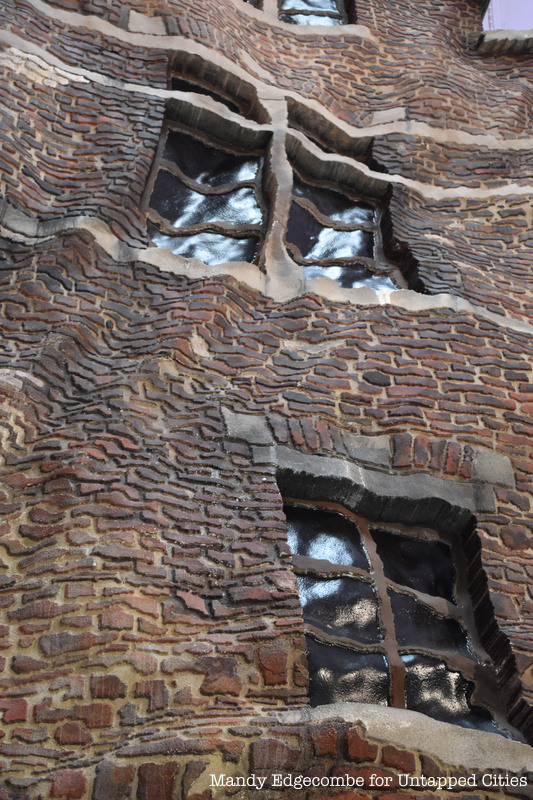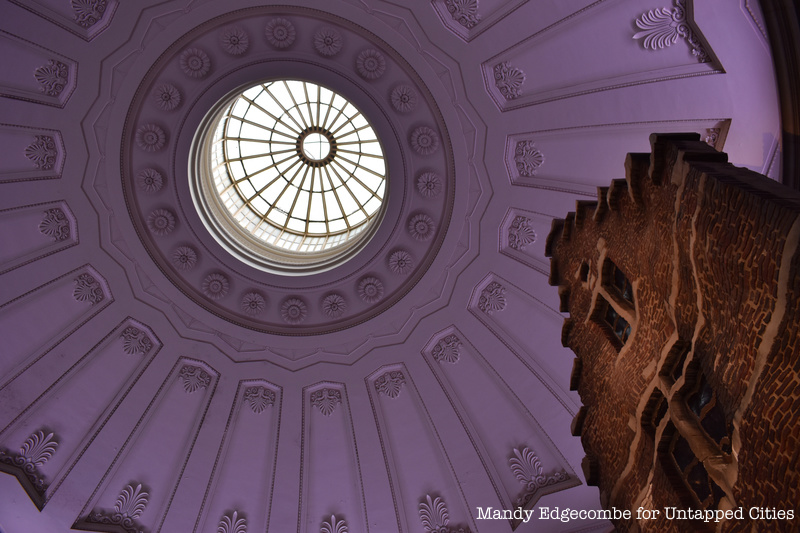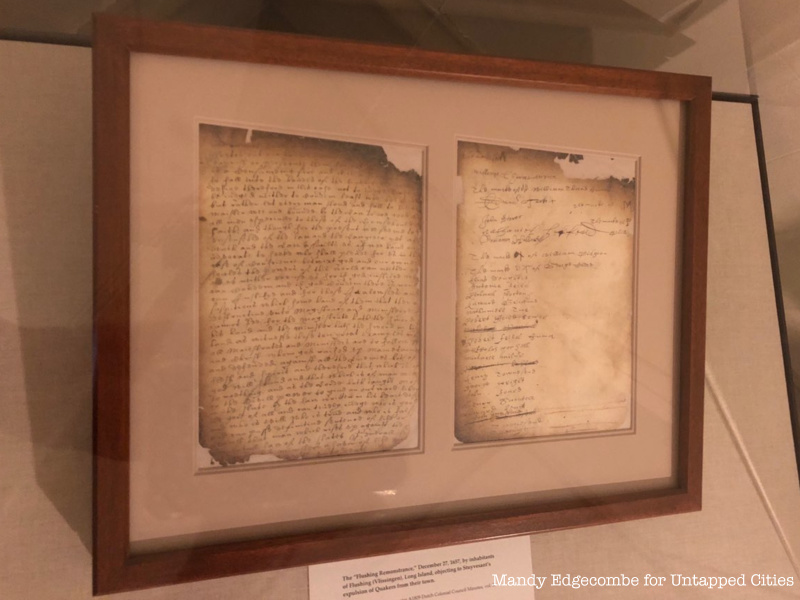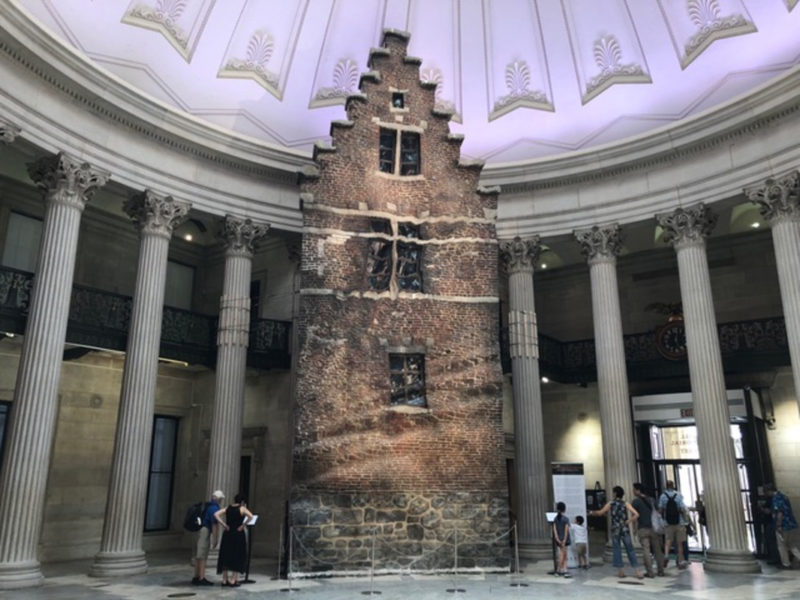Towering over the grand lobby inside Federal Hall is a 40-foot reminder of New York City’s Dutch colonial history. The massive sculpture, Eureka by Brian Tolle, is of the brick facade of a canal house reminiscent of those that would have been found in 17th century New York.
The surface of Tolle’s piece appears warped and distorted, giving the brick the appearance of rippling water. The artist described the illusion as “a facade of a facade,” intending the piece not to be a replica of a building itself, but the building’s reflection in water. Tolle noted that the visual fluidity of the piece represents New York’s “fluid, but troubled, transformation from a Dutch seat of power to British colony, to an American platform for diversity and democracy.”

The name of Tolle’s sculpture is inspired by the exclamation made by Greek polymath Archimedes when he discovered buoyant force, the upward force exerted on objects submerged in fluids. Eureka was originally created for an exhibition in Belgium, but it’s re-presentation at Federal Hall is meant to evoke reflection upon the site’s transformative architectural and political history. Federal Hall has been the site of many landmark political events, such as the trial of John Peter Zenger which laid the foundation for the freedom of press; the signing of the Northwest Ordinance which prohibited slavery in new territories; and the drafting of the U.S Bill of Rights, all instances that required leveraging of different ideas and political forces.

Eureka will be on display inside Federal Hall until September 8th, 2018 and is being exhibited in conjunction with another integral part of New York City’s Dutch past. The Flushing Remonstrance, a document from 1657 that is rarely on display, was exhibited in New York for the first time in thirty years. The Remonstrance was a petition to the Dutch West India Company for “liberty of conscience.” At the time, the only sanctioned religion in the colony of New Netherland was the Reformed Church and the meeting of any unsanctioned religion was prohibited. Tobias Feake, the author of the document, wrote on behalf of the inhabitants of Flushing to protest these laws and the poor treatment of Quakers in the colony. Though the petition itself barely affected government policy at the time, it set a precedent for the right to petition the government and for universal religious tolerance, creating a unique colonial legacy of religious freedom and free trade.
 This original document was on display up until July 2nd and has since been replaced by a replica.
This original document was on display up until July 2nd and has since been replaced by a replica.
To learn more about the Dutch history of New York City grab tickets to our upcoming tour of the Remnants of Dutch New Amsterdam!






